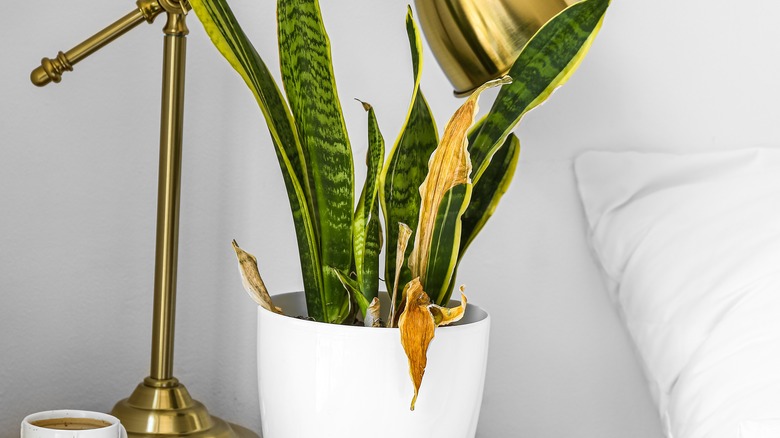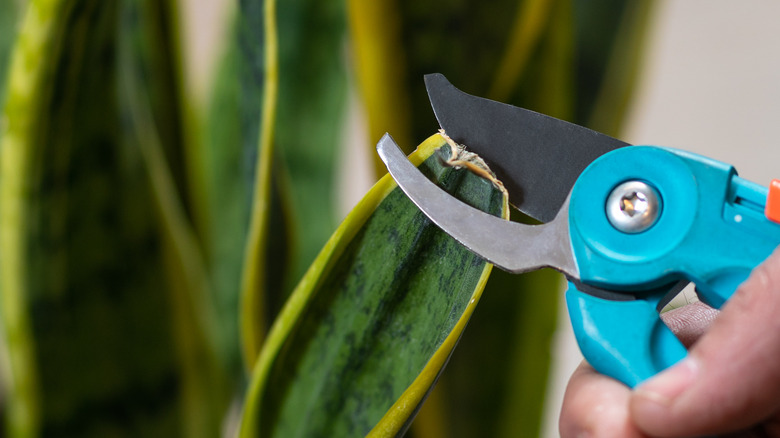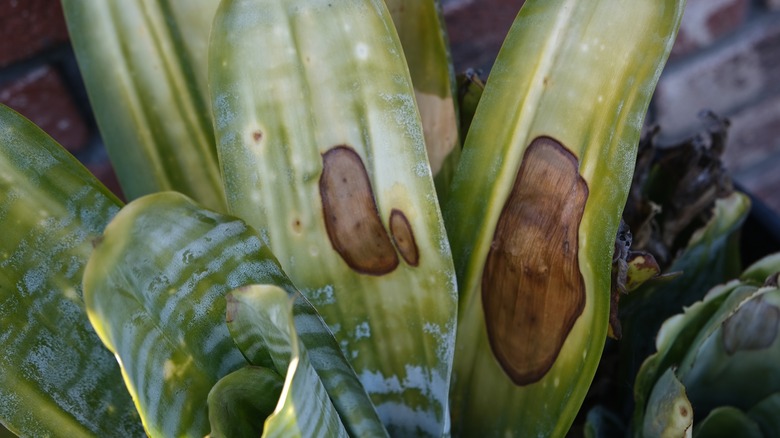The Destructive Fungi To Look Out For When Growing A Snake Plant
With its twisting and tall swordlike leaves, the magnificent snake plant is bound to create a unique statement in your home and start an interesting conversation. The succulent is believed to clear bad energy from a room, so it is often placed near doorways or entrances in feng shui design. From a health perspective, the plant is known to absorb toxins and purify the air as you sleep.
Given its benefits, it seems many serious green living enthusiasts have one if not several snake plants in their home — they are relatively easy to care for and need very little water to survive. But there are still some common issues you should know about before growing snake plants. Although the succulent is deemed to be resilient, fungi can sometimes appear on the leaves as a result of too much moisture.
The snake plant can be relatively fussy in humid places of your home and can suffer from receiving too much water. This can cause the soil to become a breeding ground for fungal diseases such as Southern blight, which usually starts in the soil and spreads up the plant. Some signs of it include brown spots on the leaves or a white substance that appears on the base of the soil. It is often mistaken as root rot and is difficult to treat once infected.
Trim off the damaged foliage and change out the soil
The best way to help your infected snake plant survive is to remove all signs of the disease. This means cutting away any of the leaves that have larger brown or gray patches. You will also want to remove any damaged roots, which are usually mushy and black instead of white and flexible. The disease is considered highly contagious, so be sure to sterilize your garden shears both before and after use.
It is also a good idea to repot your plant and replant it with fresh, uncontaminated soil. An ideal soil for snake plants is a succulent and cactus mix, which provides good aeration for the roots and allows excess water to flow through. As far as a new pot goes, it is recommended to choose a ceramic one over plastic for drainage benefits. If you do choose to keep your old pot, set it out in the sun for a few days to kill any remaining fungus.
Unfortunately, it can be hard to treat your snake plant if Southern blight has spread too much, so in some cases, your plant can die. Therefore, preventing this nasty fungus from appearing in the first place is key. As far as pointers for caring for snake plants, avoid placing them in humid spaces like bathrooms. And above all else, go easy on the water. Only water your snake plant when the soil is completely dried out — in the wintertime, this can be as little as once a month.
Keep snake plants out of humid rooms to avoid powdery mildew
Another form of fungi that can appear on your snake plant is powdery mildew, which tends to spread in environments with high humidity and poor air circulation. You will likely notice fuzzy white dots on the leaves — it might almost appear as if your plant has been dusted with flour. Although it does not pose a serious threat, you will definitely want to remove the damaged foliage and clean the remaining leaves. This will keep the fungus from spreading.
To help your plant recover faster, move the snake plant someplace where it will receive more indirect light. Also, improve air circulation with a fan or crack open a window. And in general, avoid placing your snake plant in rooms with high humidity — it prefers dry conditions. It's also a good idea to use neem oil on your indoor houseplants, as it's known to act as a natural fungicide.


